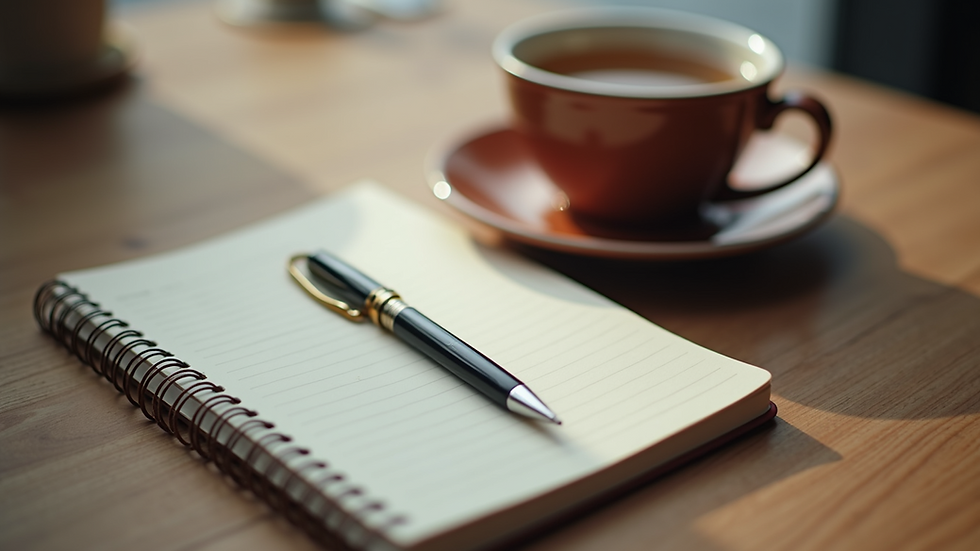Effective Stress Relief Techniques for Everyday Life
- Ebon

- Aug 23
- 4 min read
Updated: Aug 24
Stress can sneak up on us in the busiest moments, especially when juggling work demands, personal growth, and the unique challenges life throws our way. I’ve found that having a few reliable ways to ease tension quickly can make all the difference. Whether you’re navigating a hectic workday or seeking calm after a long one, these gentle, practical methods can help you find your center again.
Finding Quick Stress Relief When You Need It Most
When stress hits hard, it’s tempting to push through or ignore it. But taking a moment to pause and breathe can be a game changer. One of my favorite quick stress relief strategies is deep breathing. It sounds simple, but focusing on your breath can instantly calm your nervous system.
Try this: inhale slowly through your nose for a count of four, hold for four, then exhale gently through your mouth for six. Repeat this cycle a few times. You might notice your heart rate slowing and your mind clearing. It’s a small act that can bring big relief.
Another quick way to reset is to change your environment briefly. Step outside if you can, even for a few minutes. Fresh air and natural light work wonders. If you’re indoors, look out a window or find a quiet corner to sit and relax. These small shifts help interrupt the stress cycle and give your brain a break.

Embracing Mindfulness and Movement for Quick Stress Relief
Incorporating mindfulness into your day doesn’t require hours of meditation or special equipment. It’s about being present in the moment, noticing your thoughts and feelings without judgment. I like to combine mindfulness with gentle movement, like stretching or walking.
For example, a short mindful walk can be incredibly grounding. As you walk, pay attention to the sensation of your feet touching the ground, the rhythm of your steps, and the sounds around you. This simple practice helps shift your focus away from worries and into the here and now.
If you prefer to stay put, try some gentle stretches. Reach your arms overhead, roll your shoulders, or twist your torso slowly. These movements release physical tension and invite your mind to relax. Pairing movement with mindful breathing enhances the calming effect.

What are the Three Main Strategies to Reduce Stress?
When I think about managing stress effectively, three core strategies come to mind: awareness, action, and support.
Awareness means recognizing when you’re stressed and understanding your triggers. This might be a looming deadline, a difficult conversation, or feeling overwhelmed by too many tasks. Journaling or simply checking in with yourself during the day can build this awareness.
Action involves taking steps to address stress. This could be using quick stress relief techniques like breathing exercises, setting boundaries at work, or scheduling time for self-care. It’s about making choices that protect your well-being.
Support is crucial. Whether it’s talking to a trusted friend, joining a community, or seeking professional help, connection helps us feel less alone. Sometimes, just knowing someone understands can ease the burden.
These strategies work best when combined. Awareness helps you know when to act, and support keeps you motivated and grounded.
Creating a Personalized Stress Relief Routine
One size doesn’t fit all when it comes to stress relief. I encourage you to explore different methods and notice what feels right for you. Maybe it’s a morning meditation, a midday walk, or an evening Reiki session to unwind.
Speaking of Reiki, I’ve found that energy healing can be a gentle, effective way to release tension and restore balance. Virtual Reiki sessions are especially convenient if your schedule is tight. They offer a peaceful space to recharge without leaving your home.
To build your routine, try these steps:
Identify your stress points: When do you feel most overwhelmed?
Choose a few techniques that resonate with you.
Set small, achievable goals: even five minutes a day can help.
Be consistent but flexible: some days you’ll need more, others less.
Track your progress: notice how your mood and energy shift.
Remember, the goal isn’t perfection but progress. Each small step adds up.

How to Use Stress Relief Techniques to Support Your Growth
Incorporating stress relief techniques into your daily life can be a powerful way to support your personal growth journey. When stress is managed well, you create space for creativity, clarity, and connection.
I encourage you to explore guided meditations, breathing exercises, and energy work as part of your toolkit. These practices not only soothe the mind but also help you tap into your inner strength and resilience.
If you’re curious about Reiki, consider booking a virtual session. It’s a nurturing experience that complements other self-care habits and can deepen your sense of peace.
By prioritizing your well-being, you’re investing in your ability to thrive, not just survive. It’s a gentle reminder that you deserve care and kindness, especially from yourself.
Nurturing Yourself with Compassion and Patience
Stress relief isn’t about rushing or forcing change. It’s about showing up for yourself with kindness. When you notice stress creeping in, try to greet it with curiosity rather than judgment. What is your body telling you? What do you need right now?
Sometimes, the best thing you can do is rest, breathe, and simply be. Other times, taking action feels right. Both are valid and valuable.
I hope these ideas inspire you to find your own rhythm of calm amid the busyness. Remember, every moment you spend caring for yourself is a step toward a more balanced, joyful life.
If you ever feel overwhelmed, know that support is available, and reaching out is a sign of strength.
Wishing you peace and gentle moments of relief on your journey.




Comments